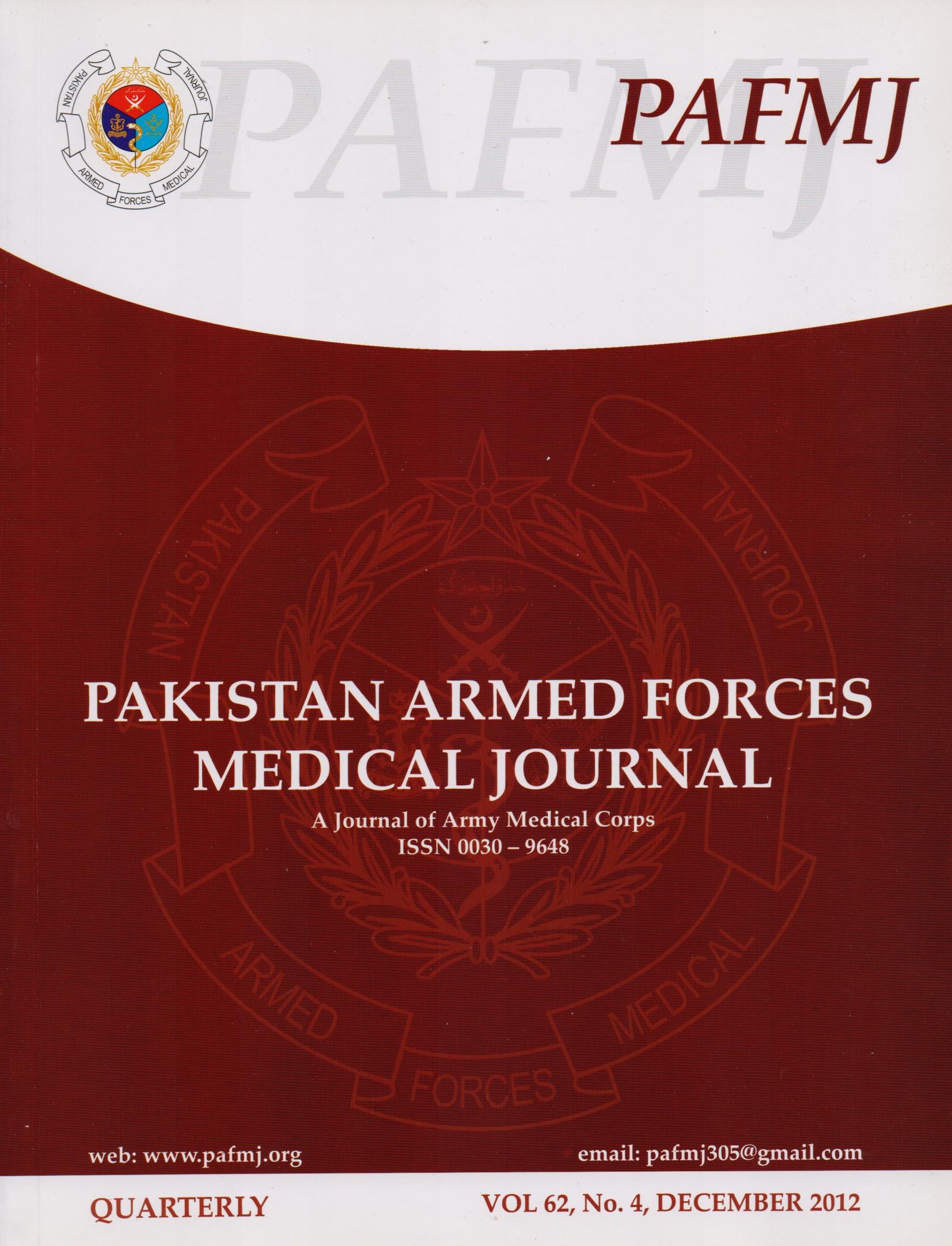FIBROSCAN: A NON INVASIVE TOOL FOR PREDICTING EARLY ESOPHAGEAL VARICES IN CHRONIC LIVER DISEASE SECONDARY TO HEPATITIS C VIRUS INFECTION
Fibroscan in Liver Disease
Keywords:
Child Pugh, Cirrhosis, Esophageal Varices, Hepatitis C, Liver StiffnessAbstract
Aim: To determine the values of liver stiffness measurement as a non invasive tool in predicting the early esophageal varices (EV).
Materials and Methods: This is a cross sectional comparative study carried out at MH Rawalpindi where 233 adults patients of hepatitis C, >20 and <80 years of age, were randomly included. All patients were subjected to endoscopy for esophageal varices and Transient Elastography for Liver Stiffness Measurement (LSM). The results were analyzed statistically using SPSS-17.0.
Results: The results showed that the optimal cut off point of LSM for predicting presence of esophageal varices (EV) is ≥18.82±4.42kpa with sensitivity 91% ( 95% CI 84-95%), specificity 71% (95% CI 67-78%), PPV 84% 95%CI 77-90%), NPV 82% (95% CI 78-84%) and AUROC value 0.76 .The optimal cut off values 31.53kpa± 7.76kpa and 46.21kpa±10.96kpa predicts for presence of large varices (≥F2, ≥F3 respectively) with AUROC value 0.83 and 0.94. Child Pugh score A for absence and B for presence of EV (≥F1) has sensitivity 83%, specificity 53%, PPV 67% and NPV 78% with AUROC value 0.67 which is lower than LSM 18.84kpa AUROC value of 0.76 (p <0.003).
Conclusion: Liver stiffness measurement is a reliable screening method which can help in patient’s selection for endoscopy with high probability of EV, thus avoiding unnecessary endoscopies.











